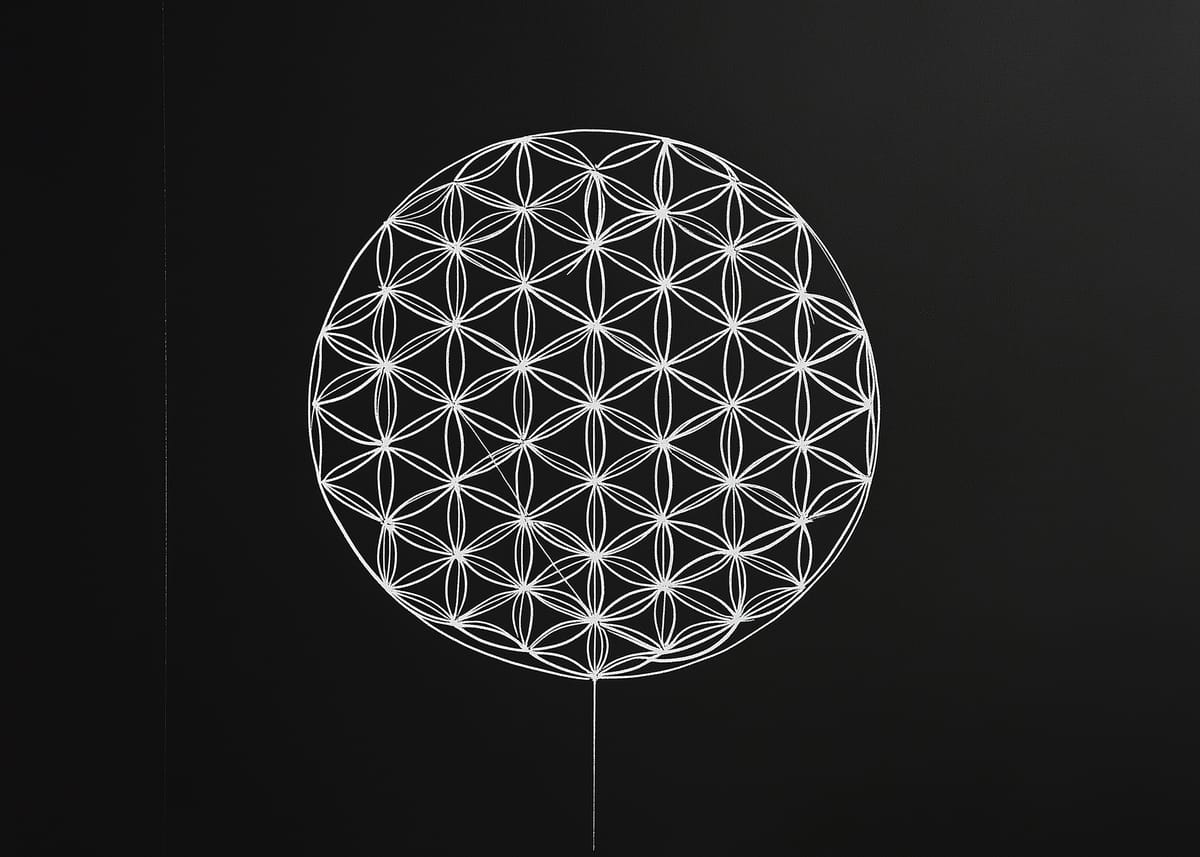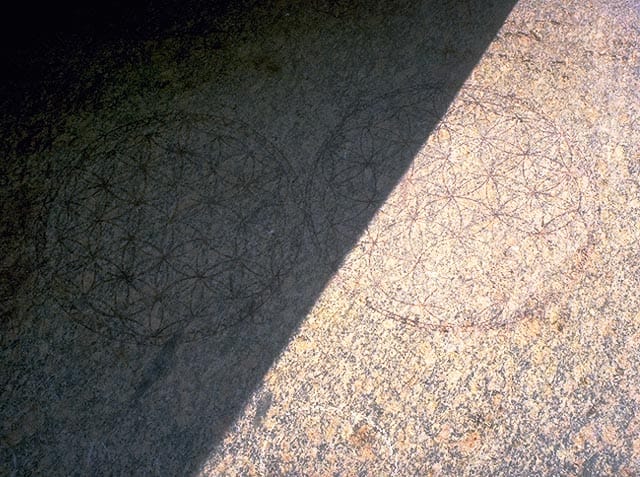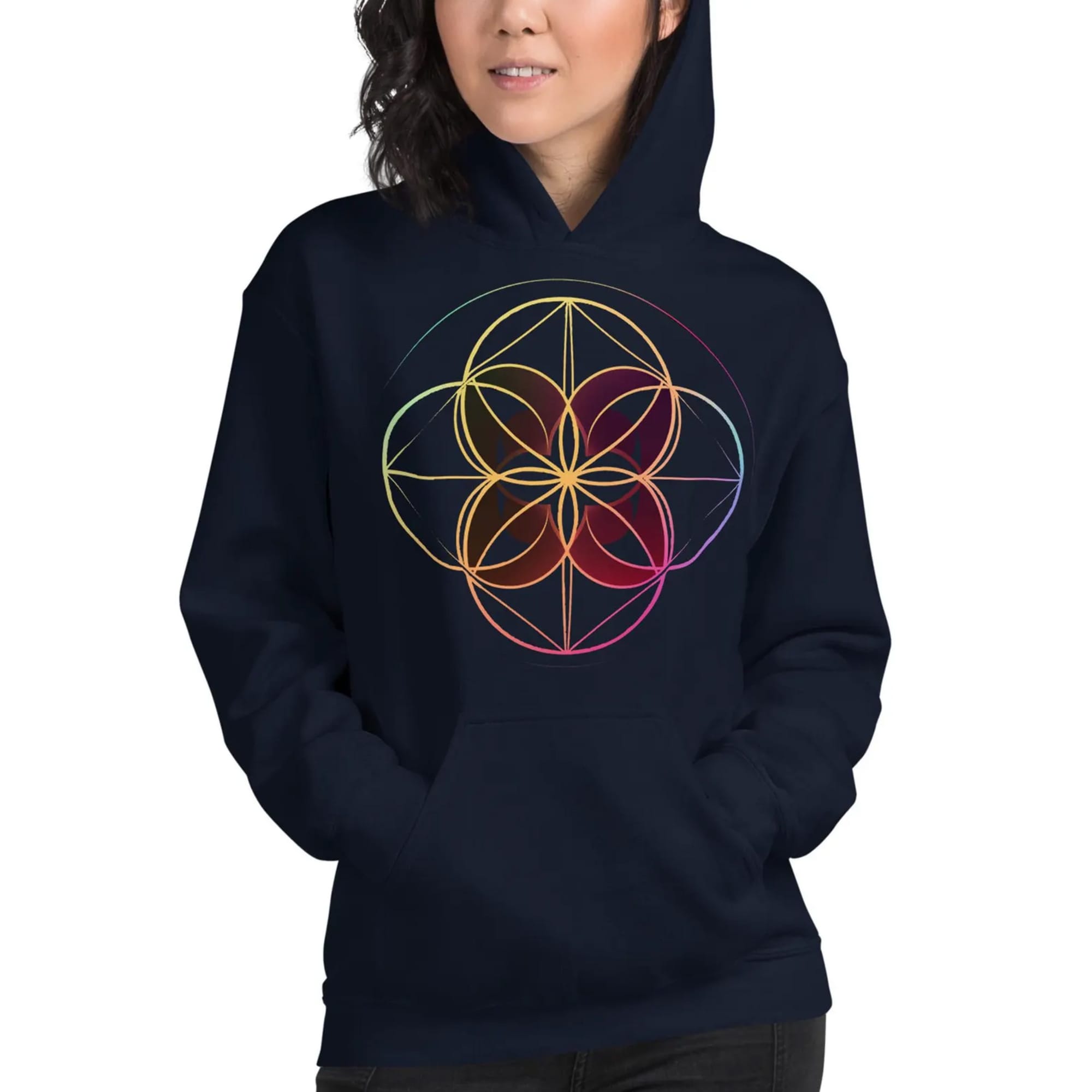The Flower of Life: connecting art, nature, and sacred geometry
The Flower of Life, a geometric pattern composed of overlapping circles, is a symbol rooted in sacred geometry and has been found across various cultures for thousands of years, representing unity, creation, and the interconnectedness of life.

Exploring the history, mathematics, and spiritual significance of this universal pattern
The ancient origins of the Flower of Life
The "Flower of Life," a pattern composed of overlapping circles arranged in a hexagonal lattice, has fascinated artists, mathematicians, and spiritual thinkers for centuries. Its origins trace back to ancient times, with examples found in various cultures worldwide. One of the oldest known depictions is found in the Temple of Osiris at Abydos, Egypt, dating back to around 600 BCE, although some sources suggest it could be even older. Over the centuries, this geometric design has appeared across different civilizations, becoming an iconic decorative motif. Its appeal lies in its simplicity, symmetry, and ability to evoke a more profound sense of unity and harmony. Despite its modern association with New Age spirituality, the Flower of Life is a universal pattern that transcends time, art, and mathematics, reflecting humanity’s ongoing fascination with geometry and order.

Geometry in art and architecture through the ages
The design consists of multiple evenly spaced, overlapping circles that create a flower-like pattern with a symmetrical structure. While the term "Flower of Life" and its widespread recognition gained popularity through Drunvalo Melchizedek's New Age book, The Ancient Secret of the Flower of Life, published in the late 20th century, the pattern itself has been present in art and architecture for millennia. Melchizedek's work helped connect the symbol to New Age ideas like sacred geometry — the belief that certain geometric shapes hold spiritual significance and reflect the underlying order of the universe. This connection brought the Flower of Life to a broader spiritual audience in modern times.
Historically, similar geometric patterns have been found in various cultures. The Romans incorporated intricate circular designs in mosaics and architectural embellishments. One notable example from Cyprus is the mosaic floor ornament from the late Hellenistic period, located at the Roman agora in the archaeological site of Kourion (see picture 6.1.12). In contrast, another example from Pompeii is found in the House of the Tragic Poet (sometimes referred to as the House of Glaucus), which features prominent mosaic artwork (see picture 6.2.1).
Islamic artists embraced complex geometric patterns, including those resembling the Flower of Life, within their intricate girih tile work, evident in structures like the Alhambra Palace in Granada, Spain. During the Middle Ages, Gothic architects utilized geometry to adorn cathedrals, invoking a sense of divine order and harmony. The rose windows of Notre Dame Cathedral are iconic examples of this, featuring radial symmetry and intricate geometric designs that echo the principles found in the Flower of Life pattern.
The math behind the Flower of Life
As the Flower of Life pattern expands, the number of circles increases according to a specific mathematical sequence: 1, 7, 19, 37, 61, 91, and so on. This sequence represents the cumulative number of circles added as the pattern grows outward in layers. For instance, when the pattern has four layers, it consists of 37 circles; with five layers, it has 61 circles. The pattern's growth can be mathematically understood by examining the circles' geometric relationships.
The complexity of the pattern is also reflected in the number of smaller shapes it contains, such as triangles. The number of triangles in the Flower of Life can be calculated using the formula:
C(n) = 3n2 - 3n + 1
where n is the number of layers in the pattern. This formula illustrates how the pattern becomes more complex as each new layer of circles is added, with each layer building upon the last in a harmonious and logical progression. The mathematical relationships within the pattern highlight the intrinsic connection between geometry and the natural progression of forms.
Nature’s link to geometric patterns
The connection between geometry and nature is evident in the natural world, where similar formations appear. For example, the arrangement of petals in flowers like dahlias mirrors the radial symmetry found in the Flower of Life pattern. Dahlia petals often exhibit a spiral or concentric arrangement, reflecting the same inherent logic that governs the circle-based structure of the Flower of Life, serving as a living embodiment of this ancient pattern.

This natural organizing principle, known as phyllotaxis, is also evident in sunflowers, pinecones, and succulents. The arrangement of seeds in a sunflower follows a spiral pattern based on the Fibonacci sequence — a mathematical sequence where each number is the sum of the two preceding ones. This sequence is closely related to the golden ratio, a proportion that is often associated with aesthetic beauty and harmony. While the Fibonacci sequence and the geometry of the Flower of Life are distinct concepts, both illustrate how mathematical principles underpin patterns in nature.
The metaphysical significance of the Flower of Life
From a metaphysical standpoint, the Flower of Life is often seen as a symbol of life’s interconnectedness and the universe’s underlying order. The transition from a mathematical arrangement to spiritual or metaphysical interpretations arises from the natural organizing principles embodied in the design. The structure's balance and symmetry visually represent how the universe, whether through physical laws or metaphysical principles, organizes itself in ways that humans find both pleasing and meaningful.
Within New Age spirituality, the Flower of Life is believed to be a blueprint of creation, containing the fundamental patterns of space and time. It is viewed as a visual representation of the interconnectedness of all life and the unity of the cosmos. Some interpretations link it to the concept of a universal life force or consciousness, suggesting that the pattern reflects the energy flow and the creation vibration. Others see it as a symbol of personal growth and spiritual awakening, representing the journey toward self-discovery and enlightenment.
The Flower of Life today
Today, the Flower of Life continues to captivate people worldwide, transcending cultural and religious boundaries. Its appeal lies in the combination of its mathematical precision and aesthetic beauty. From ancient depictions in Egyptian temples to modern interpretations in fashion, jewelry, tattoos, and home décor, the Flower of Life remains a symbol of unity, harmony, and the inherent order of the universe. As its meaning and usage evolve, the Flower of Life bridges the gap between nature and human creativity, offering a glimpse into the beauty of order amidst life's complexity.
Embrace sacred geometry with these unique hoodies
In keeping with the timeless allure of the Flower of Life, these hoodies present a fresh, modern take on sacred geometry, with simplified designs that reflect balance and unity while embracing minimalism. Perfect for lovers of spirituality, geometric art, and meaningful design, these hoodies offer a contemporary twist to ancient symbolism.

Sacred Geometry Unisex Hoodie | Artistic Heavy Blend Hoodie | Gildan Pullover Hoodie
Featuring a modern interpretation of the Flower of Life with organic linework, this hoodie celebrates the balance and symmetry of sacred geometry. Printed on a premium Gildan 18500 Heavy Blend Hoodie, it’s ideal for those who appreciate both the beauty and meaning behind geometric forms.

Sacred Geometry FORCE Unisex Hoodie | Mindfulness & Stylish | Gildan Heavy Weight Pullover Hoodie
This minimalist design incorporates the word "FORCE" into a geometric pattern, symbolizing the flow of energy and interconnectedness in the universe. Crafted from a soft blend of cotton and polyester, the Gildan 18500 Heavy Blend Hoodie combines style and mindfulness, reminding you of your inner strength.

Three Sacred Geometry Flowers of Life Zip Hoodie | Minimalist Heavy Blend Hoodie | Gildan 18600
This hoodie features a minimalist design of three interlinked Flowers of Life printed on a high-quality Gildan 18600 Heavy Blend Zip Hoodie. It’s crafted from a soft, durable blend of 50% pre-shrunk cotton and 50% polyester.












